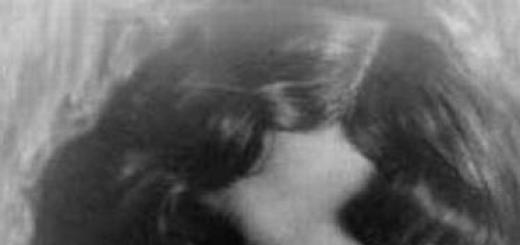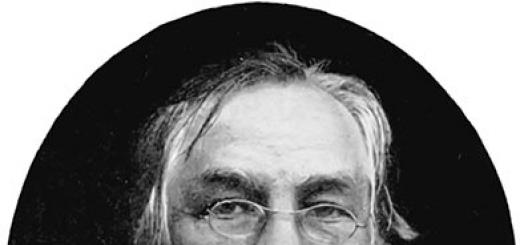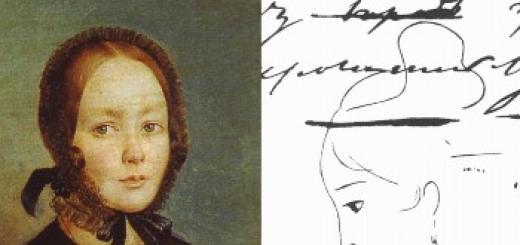1. Effect of the Na/K pump (sodium potassium pump) on membrane potential and cell volume. Constant cell volume.
3. Endocytosis. Exocytosis.
4. Diffusion in the transport of substances within the cell. The importance of diffusion in endocytosis and exocytosis.
5. Active transport in organelle membranes.
6. Transport in cell vesicles.
7. Transport through the formation and destruction of organelles. Microfilaments.
8. Microtubules. Active movements of the cytoskeleton.
9. Axon transport. Fast axon transport. Slow axon transport.
10. Regulation of cellular functions. Regulatory effects on the cell membrane. Membrane potential.
11. Extracellular regulatory substances. Synaptic mediators. Local chemical agents (histamine, growth factor, hormones, antigens).
12. Intracellular communication with the participation of second messengers. Calcium.
13. Cyclic adenosine monophosphate, cAMP. cAMP in the regulation of cell function.
14. Inositol phosphate "IF3". Inositol triphosphate. Diacylglycerol.
Meaning Na/K pump for cell is not limited to stabilizing normal K+ and Na+ gradients across the membrane. The energy stored in the membrane Na+ gradient is often used to facilitate membrane transport of other substances. For example, in Fig. Figure 1.10 shows the “symport” of Na+ and a sugar molecule into the cell. Membrane transport protein transports a sugar molecule into the cell even against a concentration gradient, at the same time Na+ moves along concentration and potential gradients, providing energy for the transport of sugars. Such transport of Sakharov completely depends on the existence high sodium gradient I; if the intracellular sodium concentration increases significantly, the transport of sugars stops.
Rice. 1.8. The relationship between the rate of transport of molecules and their concentration (at the entrance to the channel or at the binding site of the pump) during diffusion through the channel or during pumping transport. The latter becomes saturated at high concentrations (maximum speed, V max); the value on the x-axis corresponding to half the maximum pump speed (Vmax/2) is the equilibrium concentration of KtThere are different symport systems for different sugars. Amino acid transport into the cell is similar to the transport of sugars shown in Fig. 1.10; it is also provided by the Na+ gradient; There are at least five different symport systems, each specialized for one group of related amino acids.
 Rice. 1.10. Proteins immersed in the lipid bilayer of the membrane mediate the symport of glucose and Na into the cell, as well as the Ca/Na antiport, in which the driving force is the Na gradient on the cell membrane
Rice. 1.10. Proteins immersed in the lipid bilayer of the membrane mediate the symport of glucose and Na into the cell, as well as the Ca/Na antiport, in which the driving force is the Na gradient on the cell membrane
Besides simport systems there are also " anti-porters" One of them, for example, transfers one calcium ion out of the cell in one cycle in exchange for three incoming sodium ions (Fig. 1.10). The energy for Ca2+ transport is generated by the entry of three sodium ions along the concentration and potential gradient. This energy is sufficient (at resting potential) to maintain a high calcium ion gradient (from less than 10 -7 mol/L inside the cell to approximately 2 mmol/L outside the cell).
Concentration gradient(from lat. grady, gradu, gradus- progress, movement, flow, approach; con- with, together, jointly + centrum- center) or concentration gradient is vector physical quantity, characterizing the magnitude and direction of the greatest change concentrations any substance in the environment. For example, if we consider two regions with different concentrations of a substance, separated by a semi-permeable membrane, then the concentration gradient will be directed from the region of lower concentration of the substance to the region with higher concentration.
Active transport- transfer of matter through cellular or intracellular membrane(transmembrane A.t.) or through a layer of cells (transcellular A.t.), flowing against concentration gradient from an area of low concentration to an area of high, i.e., with the expenditure of free energy of the body. In most cases, but not always, the source of energy is the energy of high-energy bonds ATP.
Various transport ATPases, localized in cell membranes and involved in the mechanisms of substance transfer, are the main element of molecular devices - pumps that ensure the selective absorption and pumping out of certain substances (for example, electrolytes) by the cell. Active specific transport of non-electrolytes (molecular transport) is realized using several types of molecular machines - pumps and carriers. Transport of non-electrolytes (monosaccharides, amino acids and other monomers) can be coupled with simport- transport of another substance, the movement of which against the concentration gradient is a source of energy for the first process. Symport can be provided by ion gradients (for example, sodium) without the direct participation of ATP.
Passive transport- transfer of substances through concentration gradient from an area of high concentration to an area of low, without energy expenditure (for example, diffusion, osmosis). Diffusion is the passive movement of a substance from an area of higher concentration to an area of lower concentration. Osmosis is the passive movement of certain substances through a semi-permeable membrane (usually small molecules pass through, large molecules do not pass through).
There are three types of penetration of substances into cells through membranes: simple diffusion, facilitated diffusion, active transport.
Simple diffusion
In simple diffusion, particles of a substance move through the lipid bilayer. The direction of simple diffusion is determined only by the difference in the concentrations of the substance on both sides of the membrane. By simple diffusion they penetrate into the cell hydrophobic substances (O2, N2, benzene) and polar small molecules (CO 2, H 2 O, urea). Polar relatively large molecules (amino acids, monosaccharides), charged particles (ions) and macromolecules (DNA, proteins) do not penetrate.
Facilitated diffusion
Most substances are transported across the membrane using transport proteins (carrier proteins) immersed in it. All transport proteins form a continuous protein passage across the membrane. With the help of carrier proteins, both passive and active transport of substances is carried out. Polar substances (amino acids, monosaccharides), charged particles (ions) pass through membranes using facilitated diffusion, with the participation of channel proteins or carrier proteins. The participation of carrier proteins provides a higher rate of facilitated diffusion compared to simple passive diffusion. The rate of facilitated diffusion depends on a number of reasons: on the transmembrane concentration gradient of the transported substance, on the amount of the transporter that binds to the transported substance, on the rate of binding of the substance by the transporter on one surface of the membrane (for example, on the outer surface), on the rate of conformational changes in the transporter molecule, in as a result of which the substance is transferred through the membrane and released on the other side of the membrane. Facilitated diffusion does not require special energy costs due to ATP hydrolysis. This feature distinguishes facilitated diffusion from active transmembrane transport.
Concentration gradient or concentration gradient is a vector physical quantity characterizing the magnitude and direction of the greatest change in the concentration of a substance in the environment. For example, if we consider two regions with different concentrations of a substance, separated by a semi-permeable membrane, then the concentration gradient will be directed from the region of lower concentration of the substance to the region with higher concentration.Definition
The concentration gradient is directed along the path l, corresponding to the normal to the isoconcentration surface (semipermeable membrane). Concentration gradient value equal to the ratio of the elementary change in concentration dC to the elementary path length dl :
At a constant concentration gradient C along the way l :
Here C 1 And C 2- initial and final concentration value along the path length l(normal to the isoconcentration surface).
The unit of measurement of the concentration gradient in the International System of Units (SI) is the value −4 (mol/m 4 or kg/m 4), as well as its fractional or multiple derivatives.
see also
Write a review about the article "Concentration gradient"
Literature
- Antonov V.F., Chernysh A.M., Pasechnik V.I. Biophysics - M.: VLADOS, 2000, p. 35. ISBN 5-691-00338-0
- Trifonov E. V.- St. Petersburg: 2011.
An excerpt characterizing the Concentration Gradient
I informed him about this. Please inspire Leppich to pay careful attention to the place where he descends for the first time, so as not to make a mistake and not fall into the hands of the enemy. It is necessary that he coordinate his movements with the movements of the commander-in-chief.]Returning home from Vorontsov and driving along Bolotnaya Square, Pierre saw a crowd at Lobnoye Mesto, stopped and got off the droshky. It was the execution of a French chef accused of espionage. The execution had just ended, and the executioner was untying a pitifully moaning fat man with red sideburns, blue stockings and a green camisole from the mare. Another criminal, thin and pale, stood right there. Both, judging by their faces, were French. With a frightened, painful look, similar to that of the thin Frenchman, Pierre pushed through the crowd.
- What is this? Who? For what? - he asked. But the attention of the crowd - officials, townspeople, merchants, men, women in cloaks and fur coats - was so greedily focused on what was happening at Lobnoye Mesto that no one answered him. The fat man stood up, frowning, shrugged his shoulders and, obviously wanting to express firmness, began to put on his doublet without looking around him; but suddenly his lips trembled, and he began to cry, angry with himself, as adult sanguine people cry. The crowd spoke loudly, as it seemed to Pierre, in order to drown out the feeling of pity within itself.
- Someone’s princely cook...
“Well, monsieur, it’s clear that Russian jelly sauce has set the Frenchman on edge... it’s set his teeth on edge,” said the wizened clerk standing next to Pierre, while the Frenchman began to cry. The clerk looked around him, apparently expecting an assessment of his joke. Some laughed, some continued to look in fear at the executioner, who was undressing another.
Pierre sniffed, wrinkled his nose, and quickly turned around and walked back to the droshky, never ceasing to mutter something to himself as he walked and sat down. As he continued on the road, he shuddered several times and screamed so loudly that the coachman asked him:
- What do you order?
-Where are you going? - Pierre shouted at the coachman who was leaving for Lubyanka.
“They ordered me to the commander-in-chief,” answered the coachman.
Hello! According to the definition, the concentration gradient is directed from the side of lower concentration to the side of higher concentration. Therefore, diffusion is always said to be directed against the concentration gradient, i.e. from the side with higher concentration to the side with lower concentration.
However, when you read the literature about the life activity of a cell, photosynthesis, it always says that “along the concentration gradient” - this is in the direction of decreasing concentration, and “against the concentration gradient” - in the direction of increasing concentration and thus, for example, simple diffusion in cells (or, otherwise, ordinary diffusion) is directed along the concentration gradient.
But a contradiction arises. It turns out that the expression “along the concentration gradient” is actually a movement opposite to the direction of the concentration gradient. How can this be?
This persistent and widespread error is associated with differences in understanding the direction of the concentration gradient vector in physics and biology. Biologists prefer to talk about the direction of the concentration gradient vector from a larger to a smaller value, and physicists from a smaller to a larger value.
Dx - concentration gradient,
T – absolute temperature
M mol
Jm = ––- ––––(–- ––––) ; m - amount of substance
S × t m s Jm - (jay) – substance flow density.
Electrochemical potential–- quantity equal to energy Gibbs G per one mole of a given substance placed in an electric field.
Gibbs free energy (or simply Gibbs energy, or Gibbs potential, or thermodynamic potential in the narrow sense) is a quantity that shows the change in energy during a chemical reaction and thus gives an answer to the question about the fundamental possibility of a chemical reaction occurring; this is the thermodynamic potential of the following form:
G=U+PV–T.S.
where U is internal energy, P is pressure, V is volume, T is absolute temperature, S is entropy.
(Thermodynamic entropy S, often simply called entropy, in chemistry and thermodynamics is a function of the state of the thermodynamic system)
Gibbs energy can be understood as the total chemical energy of a system (crystal, liquid, etc.)
The concept of Gibbs energy is widely used in thermodynamics and chemistry.
Thermodynamic entropy S, often simply called entropy, in chemistry and thermodynamics is a function of the state of the thermodynamic system.
For dilute solutions, the flow density of the substance is determined Nernst-Planck equation.
d×C d×φ
Jm=–U×R×T––––- –U×C×Z×F––––- ;
d×x d×x
U–particle mobility,
R- gas constant 8.31 J/mol,
dC
z–electrolyte ion charge,
F-Faraday number 96500 kg/mol,
dφ-electric field potential,
dφ
There are two reasons for the transfer of matter during passive transport: concentration gradient and electrical potential gradient. (The minus signs in front of the gradient indicate that the concentration gradient causes the transfer of a substance from places of higher concentration to places of lower concentration.) The electrical potential gradient causes the transfer of positive charges from places with a higher potential to places with a lower potential.
Passive transfer of substances can occur from places with lower concentration to places with higher concentration (if the second term of the equation is greater in absolute value than the first).
If not electrolytes Z=0; or there is no electric field, then simple diffusion occurs - Fick's law.
Jm =–- D×––––;
D – diffusion coefficient;
- –- ––– concentration gradient;
Diffusion – spontaneous movement of substances from places with higher concentrations to places with lower concentrations of the substance, due to the chaotic thermal movement of molecules.
Diffusion of a substance through a lipid bilayer is caused by a concentration gradient in the membrane. The permeability coefficient of a membrane depends on the properties of the membrane and the substances being transferred. (If the concentrations of a substance at the surface in the membrane are directly proportional to the concentrations at the surface outside the membrane).
P=-–- ––- – permeability coefficient
K–distribution coefficient, which shows the ratio of the concentration of a substance outside the membrane and inside it.
L–membrane thickness;
D – diffusion coefficient;
Coefficient The greater the diffusion coefficient (the lower the viscosity of the membrane), the thinner the membrane, and the better the substance dissolves in the membrane, the greater the permeability.
Non-polar substances - organic fatty acids - penetrate the membrane well, but polar water-soluble substances - salts, bases, sugars, amino acids - penetrate poorly.
During thermal movement, small free planes are formed between the tails - called blades - through which polar molecules can penetrate. The larger the molecule, the less permeable the membrane is to this substance. Transfer selectivity is ensured by a set of pores in the membrane of a certain radius corresponding to the size of the penetrating particle.
Facilitated diffusion– occurs with the participation of carrier molecules. The potassium ion transporter is valinomycin, which has the shape of a cuff; lined inside with polar groups, and outside with non-polar ones. Characterized by high selectivity. Valinomycin forms a complex with potassium ions, which enter the cuff, and it is also soluble in the lipid phase of the membrane, since its molecule is non-polar on the outside.
Valinomycin molecules at the surface of the membrane capture potassium ions and transport it across the membrane. Transfer can occur in both directions.
Facilitated diffusion occurs from places with a higher concentration of the transferred substance to places with a lower concentration.
Differences between facilitated diffusion and simple diffusion:
1) the transfer of a substance with a carrier occurs faster.
2) Facilitated diffusion has the property of saturation; with increasing concentration on one side of the membrane, the flux density increases until all carrier molecules are occupied
3) With facilitated diffusion, competition of transported substances is observed, when different substances are transported by the carrier; At the same time, some substances are tolerated better than others, and the addition of some substances complicates the transport of others. Thus, among sugars, glucose is tolerated better than fructose, fructose is better than xylose, and xylose is better than arabinose.
4) There are substances that block facilitated diffusion - they form a strong complex with carrier molecules. Stationary molecules are carriers that are fixed across the membrane and are transferred from molecule to molecule.
Filtration- movement of a solution through pores in a membrane under the influence of a pressure gradient. The transfer rate during filtration obeys Poiseuille's law.
D v P1 – P2
–- –– = - ––––––;










